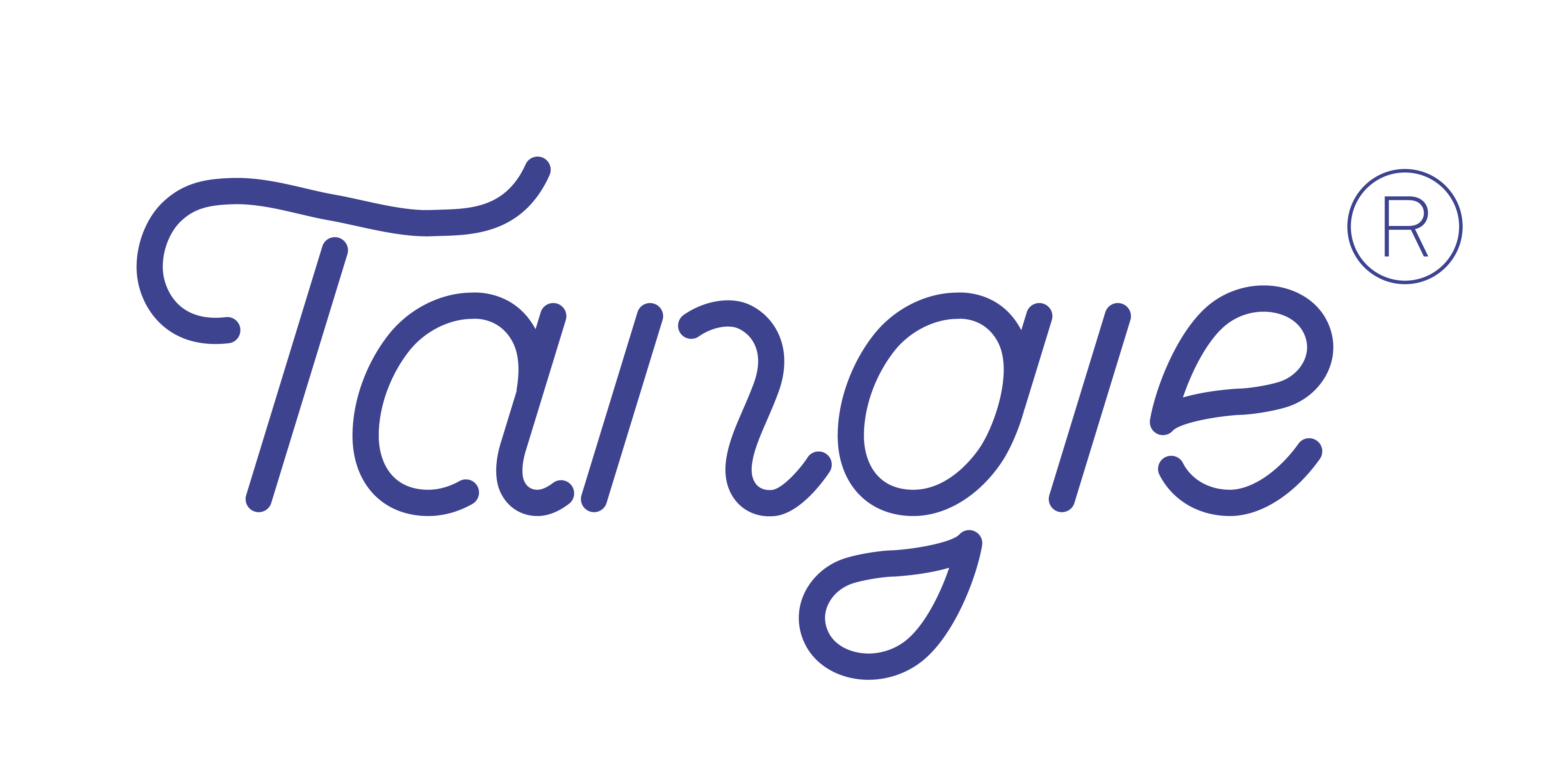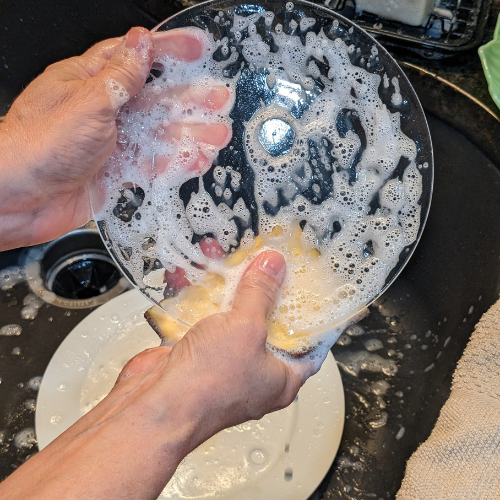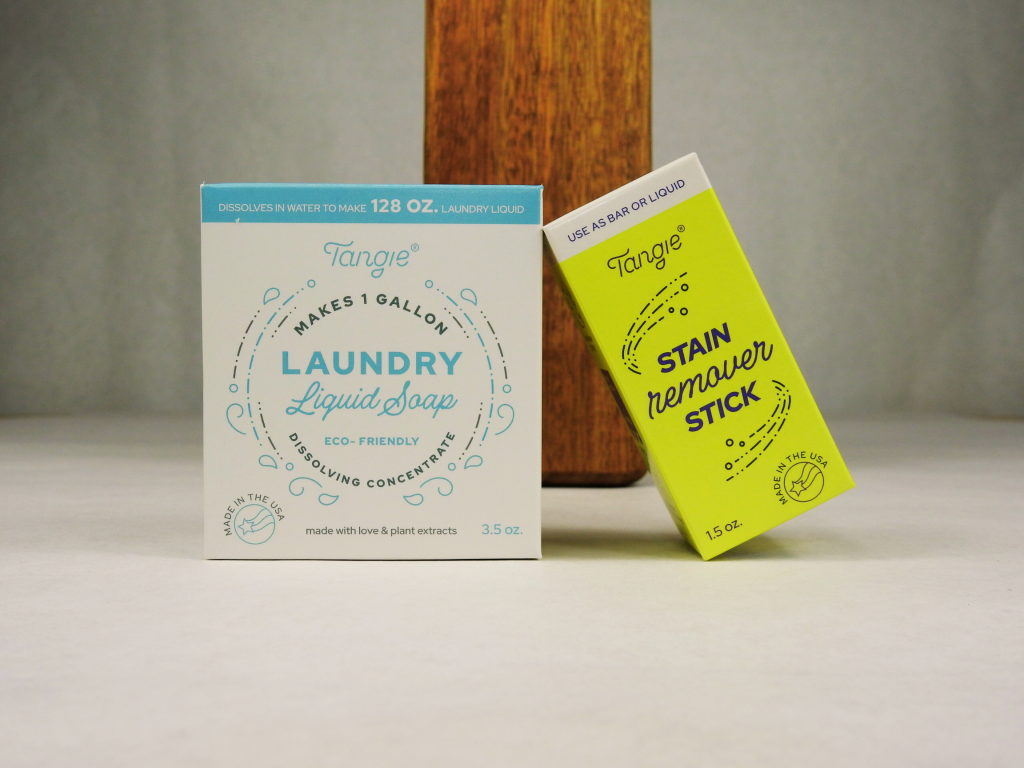How To Make A Soap At Home – Soap Making 101

My journey into homemade soap making began with my passion for crafting items at home. I focused on creating Tangie to help those suffering from skin irritations. Once I learned that petrochemicals hurt both our skin and the environment, I became determined to find a solution that aligns with my values and benefits everyone.
Although it required a significant time investment, I discovered that completing projects by myself was incredibly fulfilling. This process deepened my appreciation for the products I received and heightened my awareness of the quality of ingredients, positively focusing entirely on chemical-free & zero waste.
In this article, we will run through the process of making homemade soaps, but we will also go in-depth about the soap-making supplies and the ingredients a traditional soap bar has that we must avoid at all costs.
- Chemistry Behind Soaps
- Soap Making Supplies & Ingredients
- Where to Buy Lye for Soap Making & Is It Safe?
- How To Make Soap At Home [Materials + Ingredients]
- How To Make A Dish Soap Bar
- Soap Making Tips & Recommendations
How To Understand The Chemistry Behind Soaps
Soaps are a fascinating product of chemistry, primarily composed of molecules that are both hydrophilic (water-attracting) and hydrophobic (water-repelling). These dual properties allow soaps to effectively remove dirt, grease, and oils from surfaces.
The process begins with saponification, a chemical reaction in which fats or oils are treated with a strong alkali, such as sodium hydroxide or potassium hydroxide. This reaction breaks down the triglycerides in fats into glycerol and fatty acid salts, which are the actual soap molecules.
The hydrophobic tails of soap molecules attach themselves to grease and oils, while the hydrophilic heads remain attracted to water. When water is applied, the soap molecules surround the grease particles, forming tiny droplets called micelles.
These micelles trap the grease inside, allowing it to be rinsed away with water. This unique mechanism makes soap an essential tool for cleaning and hygiene.
In addition to their cleaning properties, soaps can also be enhanced with additives like fragrances, moisturizers, and antibacterial agents to improve their functionality and appeal. Understanding the chemistry behind soaps not only highlights their practicality but also showcases the ingenuity of chemical science in everyday life.
What Distinguishes Cold Process Soap From Hot Process Soap?
Both methods begin with the same mixing procedure. However, cold process soap does not undergo additional heating, requiring a mold time of 24 to 48 hours to complete the saponification process (the chemical reaction involved in soapmaking). In contrast, hot process soap is heated, typically in a crockpot, which accelerates the initial saponification period. Once this is done, both types of soap require a curing period of several weeks to reach optimal quality!
Soap Making Supplies & Ingredients
Homemade soap, when it has undergone an adequate curing process, tends to be gentler on the skin and more moisturizing compared to a large number of commercially available soaps.
Many commercial soaps are formulated with synthetic detergents that can strip the skin of its natural oils, leading to dryness and irritation. In contrast, homemade soap is typically made with natural ingredients, such as oils, butters, and lye, which can provide nourishing benefits.
The curing process is an important step, as it enables the soap to solidify and allows the chemical reactions to fully conclude. This ensures a product that is gentler on the skin and enhanced with moisturizing qualities. Depending on the recipe, this process may require a few weeks to several months, ultimately contributing to a softer and more skin-friendly outcome.
Soap Making Ingredients
| Ingredient | Purpose | Where to Buy |
|---|---|---|
| Lye (Sodium Hydroxide) | Essential for saponification. | See section 2 below |
| Distilled Water | Prevents impurities; don’t use tap water. | Grocery stores |
| Base Oils | Common ones: Olive oil, Coconut oil, Palm oil, Castor oil. | Grocery stores, Bulk food stores, Soap supply websites |
| Essential Oils/Fragrances | Adds scent & fragrance | Health stores, Soap supply websites, Amazon |
| Colorants (optional) | Mica powders, natural clays, or herbal powders. | Soap supply stores, Etsy, Amazon |
| Additives (optional) | Oats, agave, dried herbs, etc. | Grocery stores or online |
Where to Buy Lye for Soap Making & Is It Safe?
Lye undergoes a chemical reaction when combined with fats or oils, transforming them into soap and glycerin. Once this process is complete, no lye remains in the finished product, making the soap completely safe for use.
Proper safety precautions, such as wearing gloves and goggles, should always be taken when working with lye to avoid accidents. Despite its intimidating reputation, lye is a crucial ingredient that has been used for centuries to create high-quality, effective soaps.
The chemical reaction between lye and oils neutralizes the lye. When done right, the final soap contains no lye residue.
Safety Tips for Using Lye
- Always wear gloves and goggles: When handling lye, it’s essential to protect your skin and eyes from its corrosive properties. Use chemical-resistant gloves and goggles to minimize the risk of burns or injuries. Ensure that the gloves fit well and are intact, as even a small splash can cause significant harm.
- Mix lye into water, never water into lye: This is a critical safety tip. When combining lye with water, always pour the lye into the water slowly, stirring gently. Mixing water into lye can cause a violent reaction, leading to splashing or even an explosive eruption, which can be extremely dangerous.
- Use in well-ventilated areas: Lye can release harmful fumes that may irritate the eyes, nose, throat, and lungs. To reduce the risk of inhalation, always work in a space with good air circulation. If possible, work outdoors or use a fan to enhance ventilation. If you start to feel dizzy or lightheaded, leave the area immediately.
- Store lye in an airtight container: Proper storage is crucial for safety. Lye should be kept in a clearly labeled, airtight container to prevent accidental exposure or ingestion. Store it in a place that is out of reach of children and pets to avoid accidental contact. Always ensure the container is secure and check it regularly for any signs of damage.
- Do not use aluminum containers: Lye reacts violently with aluminum, which can lead to the release of hydrogen gas and potentially cause explosions. Always use containers made of glass, stainless steel, or plastic that are resistant to corrosion. Avoid using utensils or tools made from aluminum as well.
| Do Homemade Soaps Expire? Homemade soaps, like any other skincare product, have a shelf life. While they don’t “expire” in the traditional sense of becoming harmful, their quality and effectiveness can diminish over time. Factors such as the type of ingredients used, storage conditions, and the presence of preservatives play a significant role in determining how long homemade soap remains usable. Natural oils and fats in soaps can go rancid after a certain period, often resulting in an unpleasant odor or texture changes. Essential oils used for fragrance may also fade over time. Generally, homemade soaps last between 6 months to 2 years if stored properly in a cool, dry place away from direct sunlight. Adding natural antioxidants like vitamin E can help extend their shelf life. To ensure the best experience, check for any signs of spoilage such as discoloration, off smells, or unusual texture before using older soaps. |
Where to Buy Lye (Sodium Hydroxide)
| Source | Notes |
|---|---|
| Online Soap Supply Stores | Most reliable and purest form. Examples: Bramble Berry, Bulk Apothecary, Essential Depot. |
| Amazon or eBay | Available, but ensure it’s 100% Sodium Hydroxide with no additives. |
| Local Hardware Stores | Usually sold as drain cleaner (Red Devil, Rooto). Must be labeled 100% Sodium Hydroxide – double-check before use. |
| Pharmacies (some countries) | Rare and often restricted. |
How To Make Soap At Home [Materials + Ingredients]
Making soap at home can be a fun and creative activity. Here’s a simple guide to making basic soap using the cold process method:
Materials Needed
Lye (sodium hydroxide) – Handle with care.
Distilled water
Oils or fats – Common choices include olive oil, coconut oil, palm oil, or shea butter.
Essential oils (optional) – For fragrance.
Colorants (optional) – Natural or cosmetic-grade.
Add-ins (optional) – Such as dried herbs, oatmeal, or exfoliants.
Soap mold – Silicone molds work well.
Protective gear – Gloves, goggles, and long sleeves.
Digital scale – For accurate measurements.
Stick blender – To mix the soap batter.
Heatproof containers – For mixing lye and oils.
Instructions For Soap Making
Prepare Your Workspace
- Work in a well-ventilated area.
- Wear protective gear to avoid contact with lye.
Measure Ingredients
- Use a digital scale to measure the lye, water, and oils accurately.
- Follow a trusted recipe to ensure the correct proportions.
Mix Lye Solution
- Slowly add lye to distilled water (never the other way around) and stir until dissolved. This will create heat and fumes, so be cautious.
- Set the lye solution aside to cool.
Heat Oils
Melt your oils or fats in a heatproof container until they are fully combined.
Combine Lye and Oils
- Once both the lye solution and oils are at a similar temperature (around 100–120°F or as specified in your recipe), slowly pour the lye solution into the oils.
- Use a stick blender to mix until the mixture reaches “trace” (a pudding-like consistency).
Add Fragrance or Color (Optional)
Stir in essential oils, colorants, or any other add-ins. When making homemade soap, selecting the right fragrances can elevate your creation and make it truly special. Here’s a detailed look at some of the best fragrances to consider:
- Lavender: Known for its calming and soothing properties, lavender essential oil not only adds a pleasant floral scent but also has skin-soothing benefits.
- Eucalyptus: This refreshing, invigorating scent can create a spa-like experience in your soap. Eucalyptus essential oil is also known for its antiseptic properties.
- Peppermint: A popular choice for its crisp and invigorating aroma, peppermint essential oil can provide an energizing effect and skin-cooling sensation.
- Citrus Blends: Fragrances like lemon, orange, and grapefruit bring a bright and cheerful scent to your soap. They are also excellent for their antibacterial properties.
- Rose: The delicate and romantic scent of rose essential oil can create luxurious, feminine soaps and is well-known for its moisturizing benefits.
- Vanilla: This warm, sweet scent adds a cozy feel to your soap and blends well with other fragrances, making it a versatile choice.
- Tea Tree: With its medicinal scent, tea tree oil is praised for its antibacterial and antifungal properties, making it a perfect addition for acne-prone skin.
- Sandalwood: For a more earthy and grounding aroma, sandalwood is beautifully rich and can provide notes of warmth and resilience.
- Jasmine: The exotic, sweet fragrance of jasmine can evoke romantic feelings and is often used for its soothing properties.
- Bergamot: The refreshing citrus scent of bergamot has mood-lifting effects and combines well with other floral and herbal fragrances.
When selecting fragrances, consider whether you prefer essential oils, which are derived from natural plant sources, or fragrance oils, which can offer a wider variety of scents. Remember to test the fragrance in small batches, as some scents may behave differently once saponification occurs.
Pour into The Mold
Pour the soap batter into your mold and smooth the top.
Let It Set
Cover the mold with a towel or lid and let it sit for 24–48 hours to harden.
Unmold and Cut
Once hardened, remove the soap from the mold and cut it into bars.
Cure the Soap
Place the freshly made soap bars on a drying rack, ensuring that they are evenly spaced apart to allow for optimal air circulation. This step is crucial as it helps in the curing process, which typically takes about 4 to 6 weeks.
During this time, the soap undergoes a natural evaporation process that eliminates excess moisture content.
Curing is essential for several reasons: first, it helps in hardening the soap by allowing the water to evaporate, resulting in a longer-lasting bar. Second, it enhances the soap’s overall texture, making it smoother and more pleasant to use.
Most importantly, ensuring that the soap has fully cured makes it gentler on the skin. Soap that hasn’t cured properly may retain too much moisture, leading to a softer texture that can dissolve quickly and may not provide the desired cleansing properties.
By allowing your soap to cure for the recommended duration, you are guaranteed a high-quality product that is not only effective but also provides a delightful experience when used on the skin. After the curing period, the soap bars can be wrapped or stored properly for future use, maintaining their quality and benefits.
This recipe serves as just one example amidst the vast array of potential combinations and ratios of fats, lye, and various other ingredients that can be creatively blended to produce homemade soap.
How To Make A Dish Soap Bar At Home
This recipe is formulated to create a hard, cleansing soap that cuts grease effectively. Using high coconut oil content in your cleaning products is essential for achieving maximum cleaning effectiveness. Coconut oil is known for its natural antibacterial properties, making it an excellent ingredient for various cleaning applications. It can help break down dirt, grime, and grease, leading to a more thorough clean.
When selecting products, look for those that contain a higher percentage of coconut oil, which can enhance the cleaning process. This is particularly beneficial for kitchen and bathroom surfaces that are prone to bacteria and buildup. Additionally, coconut oil is a natural moisturizer, meaning it can leave surfaces smooth and shiny without harsh chemicals.
| Ingredient | Amount | Purpose |
|---|---|---|
| Coconut Oil | 500g | High cleansing, creates hard bar |
| Castor Oil | 50g | Boosts lather |
| Sodium Hydroxide (Lye) | 94g | Reacts with oils to form soap |
| Distilled Water | 190g | Dissolves the lye |
| Lemon or Lime Essential Oil (optional) | 15–20g | Adds fresh, degreasing scent |
| Lemon Zest or Citric Acid (optional) | 1–2 tsp | Mild natural degreaser |
Superfat: 0–1% (low superfat ensures it rinses clean without residue)
Instructions
Step 1: Prepare Workspace
- Wear gloves and goggles
- Work in a well-ventilated area
- Prepare your soap mold
- Step 2: Mix the Lye
- Slowly add lye to distilled water (never the other way around)
- Stir until dissolved; allow to cool to ~100°F (38°C)
Step 3: Melt the Oils
- Gently melt the coconut oil and add the castor oil
- Let the oil mixture cool to ~100°F
Step 4: Combine Lye and Oils
- Pour the lye solution into the oils
- Blend with a stick blender until medium trace (pudding texture)
Step 5: Add Essential Oils or Extras
- Add lemon EO, zest, or citric acid (optional)
- Stir thoroughly
Step 6: Pour into the Mold
- Pour batter into your mold
- Tap gently to release bubbles
Step 7: Insulate and Set
- Cover and insulate for 24–48 hours
- Unmold and cut if needed
Step 8: Cure the Soap
- Cure for 4–6 weeks in a cool, dry place
- Turn bars weekly
Soap Making Tips & Recommendations
Many individuals hesitate to make soap due to the need to handle lye. I can relate to this feeling, as I initially felt the same! At first, I had my husband take care of that part until I became more comfortable with the process.
While lye should be handled with care, it’s important to use the same common sense as you would in any potentially hazardous situation, such as cooking on a hot stove or using a strong household cleaner like bleach. Always wear appropriate protective gloves and eyewear when working with lye, and treat it with the respect it deserves.
Do NOT allow children to participate in this activity, and ensure that pets are kept out of your workspace.
Always add lye to water and other liquids, not the other way around. You can remember this by imagining snow (the lye) falling onto a lake (the water). The lye solution heats up quickly and produces strong fumes for a brief period, so avoid inhaling them.
The best workspace is your kitchen sink, ideally near an open window. If lye comes into contact with your skin, rinse it off thoroughly with plenty of cool water. Using an accurate digital scale is crucial! Avoid measuring soap-making ingredients by volume (like cups or tablespoons) as it isn’t sufficiently precise.
The process of soap making is not only a craft but also a delightful adventure, offering endless opportunities to experiment with different formulations. Each unique recipe can yield surprisingly diverse results, making it an engaging exploration for those who enjoy hands-on activities and DIY projects.
Among the many combinations I’ve tried, some truly stand out. For instance, the blend of bright orange and the warm, earthy scent of sandalwood creates an invigorating aroma, enhanced by the added texture of poppy seeds, which also contributes an appealing visual aspect to the final product.
Similarly, the soothing floral notes of lavender paired with the herbaceous scent of clary sage manifest a calming experience, especially when complemented by the delicate, fragrant dried lavender blossoms.
Each of these combinations not only serves practical purposes but also elevates the soap-making process into a creative and enjoyable art form.
 Save $$ every time you buy Tangie bar
Save $$ every time you buy Tangie bar











